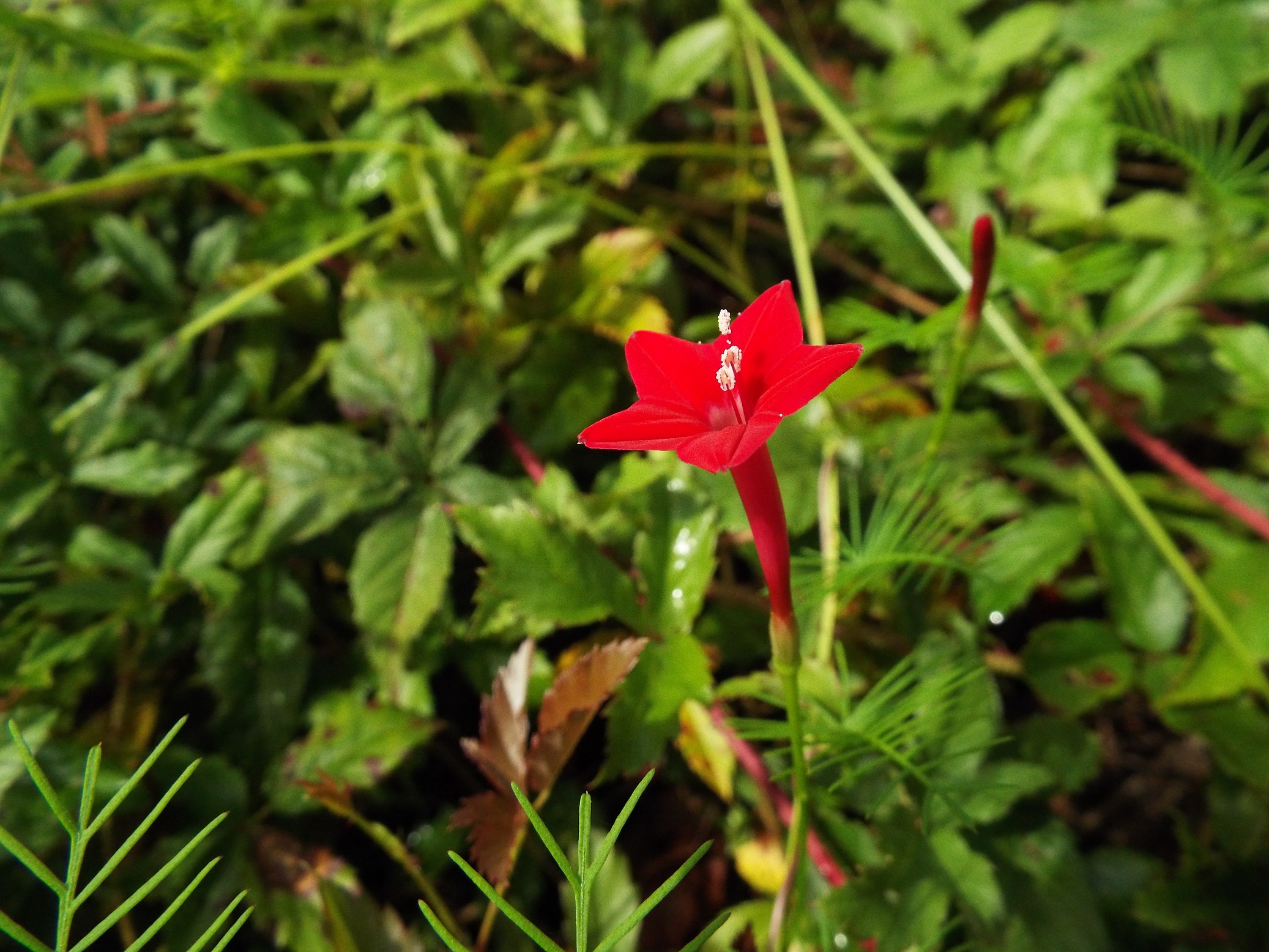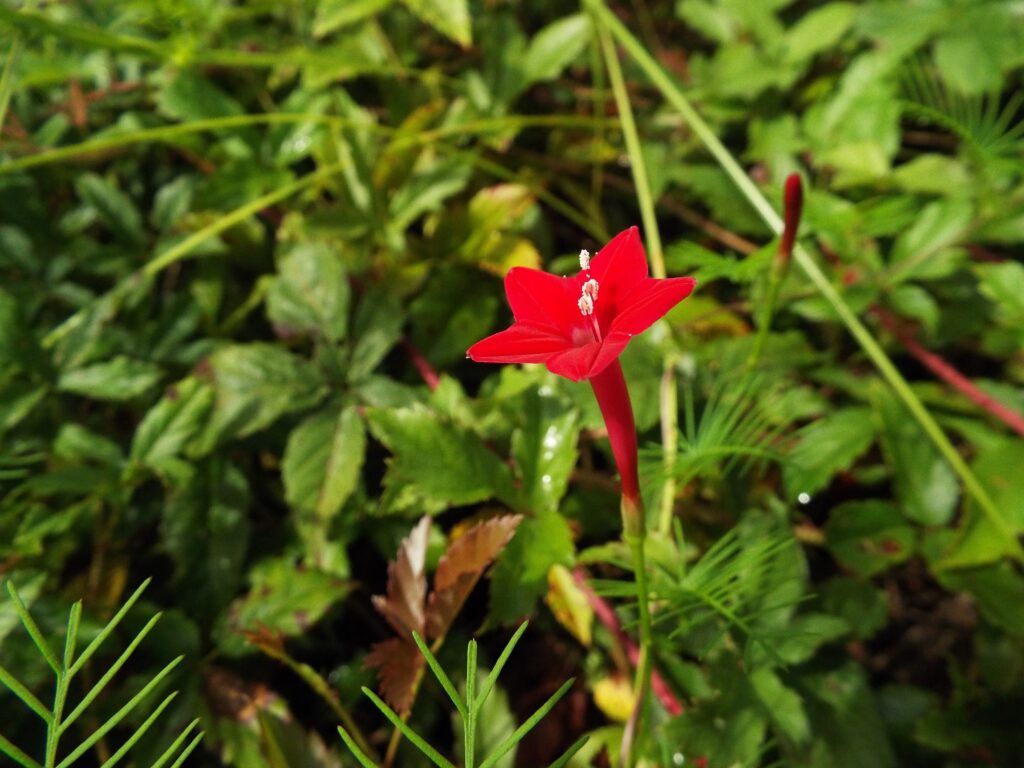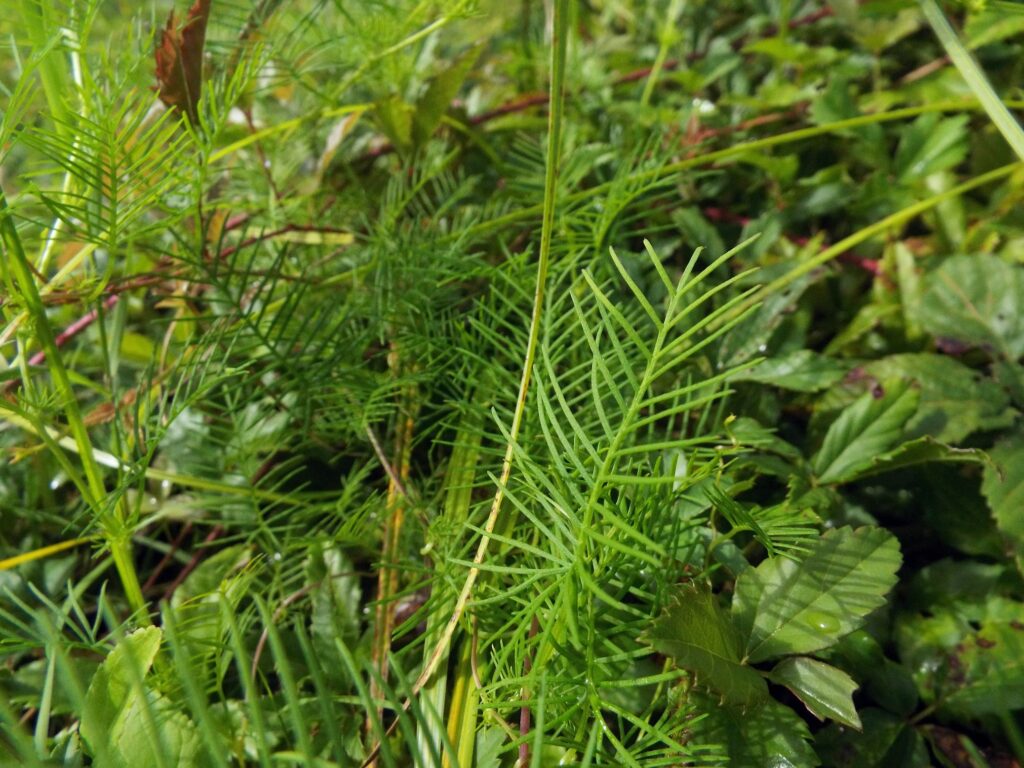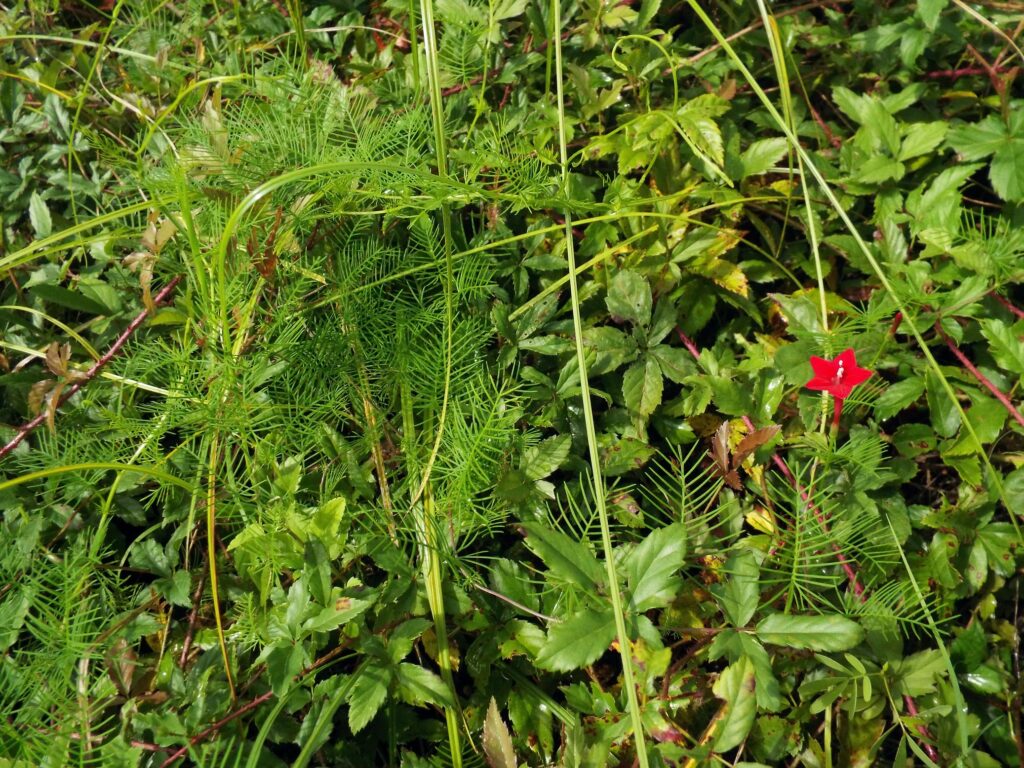



For this week’s Flora and Fauna Friday, we’ll be taking a look at another flowering vine: Cypressvine (Ipomoea quamoclit).
Cypressvine is not a species native to the USA. It’s from to tropical America, with a native range stretching from Mexico down to northern South America. It was introduced to the United States as an ornamental and has taken hold in the coastal plain of the SE-US. The hot summers and short winters here allow it to thrive. However, unlike most established exotics, Cypressvine is fairly tame in its ecological effects.
Cypressvine is a member of the Morning Glory family, Convolvulaceae. It’s not to be confused with Cardinal Climber (Ipomoea sloteri), which a hybrid between Cypressvine and Red Morning Glory (Ipomoea coccinea). Like other Morning Glories, it is a fast growing, herbaceous vine that climbs by twining; it simply wraps its soft stems around its surroundings. It is an annual and reliable self-seeder. The leaves are lobed to the absolute extreme and exhibit a feather-like appearance. This is where it gets its common name of Cypressvine, as its leaves look very similar to those of Cypress trees (Taxodium spp.). Cypressvine boasts a beautifully scarlet flower, delicately built and trumpet shaped. This flower is a favorite nectar source for hummingbirds and large butterflies.
Cypressvine requires full sun and plentiful moisture to thrive. This is necessary to support those feathery leaves. In plant ecology, you can tell a lot about a plant’s habitat requirements and lifestyle just by examining its leaves. In simplified terms, the wider and more circular a leaf is, the more sunlight it can catch and photosynthesize. The narrower and more complicated a leaf is, the less sunlight that will hit it. So why would a plant have such complicated leaves if it loves full sun? Photosynthesis isn’t 100% efficient. If a leaf receives too much sunlight, then it will cook alive and die. Plants in high light avoid frying their leaves by using a process known as transpiration, evaporative cooling from the microscopic pores of their leaves. It uses the same physics as sweating, what we humans use to cool ourselves with. The greater the surface area of a leaf is, then the more water it is able to “sweat off”. The greater the ratio of surface area to volume, the faster that “sweating” can cool the inside of the leaf. If the shape of a leaf prevents the plant from cooling down faster than it heats up, then it won’t be able to survive. Leaves that are as feathery as those of Cypressvine tell you that this plant requires full sun and a reliable source of water. Those feathery leaves allow Cypressvine to grow non-stop in the most intense sunlight without burning up. The leaves act like hundreds of tiny heat sinks/radiators. In order to maintain all those leaves, a reliable source of water is needed. This is why Cypressvine prefers to grow in shallow ditches or along fence lines. The shade and dense vegetation helps keep the soil cool and moist while giving the plant something to climb on.
The ecological value of Cypressvine in our area is complicated. It’s obviously an exotic plant that has escaped cultivation and demonstrated its ability to both grow vigorously and establish new populations. In high enough densities, it can dry out wetland soils with the sheer volume of water it loses through transpiration. However, it has fairly particular habitat requirements, it only thrives in areas where human disturbance is high, it’s feathery leaves block very little sunlight making it unable to choke out the majority of native plants, it dies off completely each year, and it provides a valuable source of nectar for pollinators throughout the summer and fall. In many ways Cypressvine fills an ecological niche that was wide open. The take away is: you can’t judge a book by its cover and you can’t always judge an exotic plant by its alien origin, sometimes they can end up helping more than they hurt.